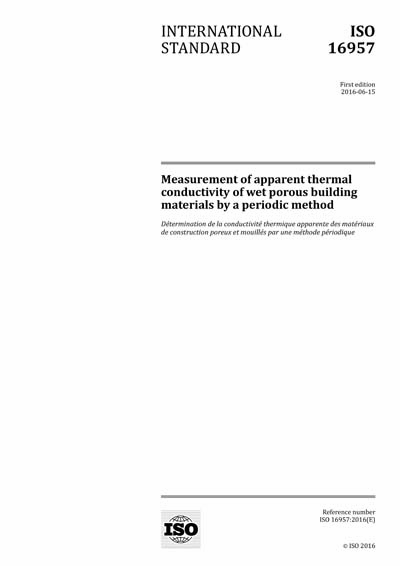Most recent
ISO 16957:2016
Measurement of apparent thermal conductivity of wet porous building materials by a periodic method
ISO 16957:2016 describes a method of measuring the thermal conductivity (diffusivity) of a wet porous building material and a method of evaluating the measurement uncertainty.
While ISO 10051 is the current International Standard, based on a steady-state method, ISO 16957:2016 proposes a method that makes use of a non-steady-state method which uses a small temperature change with a short period as an input. Along with the measurement, an evaluation of the measurement uncertainty is described, which makes possible a simple and practical measuring method.
ISO 16957:2016 intends to measure the apparent (effective) thermal conductivity, including latent heat transfer caused by vapour movement. The situation in which moisture and/or air movement occur due to convection or gravity is excluded. The application of ISO 16957:2016 to high moisture content is excluded so that the gravity effect can be neglected. ISO 16957:2016 can be applied to a porous material heavier than about 100 kg/m3, in which radiative heat transfer can be neglected.
It specifies the following:
a) a non-steady-state method of measuring thermal conductivity;
b) an approximation formula for the measurement uncertainty caused by moisture movement and nonuniform moisture distribution (and, thus, a determination of the measuring conditions that satisfy the upper limit of measurement uncertainty);
c) an estimate of the heat transfer caused by moisture (vapour) movement.
International Organization for Standardization [iso]

